Hi-Fi Hall of Fame
Technology Inductee
MP3 Digital Coding Format

Introduction
Our next nominee for the Hi-Fi Hall of Fame is the “MP3” Digital Coding Format. MP3 is shorthand for “Motion Picture Experts Group” (MPEG) Audio Layer III. MP3 is a digital coding format that is used to encode audio into a digital form for storage and streaming.
Nominating MP3 to the Hi-Fi Hall of Fame may be controversial to some people, for two reasons. First, because MP3 is a technology that not everybody considers to be “high fidelity”. Second, because the emergence of MP3 contributed to the problem of music piracy, which became a major problem for the music industry.
But judged purely on it’s capabilities and it’s impact on the music industry, we believe that MP3 is worthy of consideration. Let’s take a look at this controversial technology.
MP3 – Key Facts
| Technology | MP3 Digital Coding Format |
| Developers | Fraunhofer Society Dr. Karlheinz Brandenburg |
| Key Capabilities | “Lossy” audio compression standardized encoder and decoder perceptual coding and psychoacoustic modeling “Metadata” and tags to describe the content |
| Launched | 7 July 1994 |
Development of the MP3 Digital Coding Format
The MP3 format was developed largely by a German organization called the Fraunhofer Society, under the leadership of Dr. Karlheinz Brandenburg, with support from other digital scientists in the United States and elsewhere.

The requirement was for a coding format that could “compress” a digital music file. Compression allows a digital file to be shrunk to a small fraction of it’s original size so that it takes up less space when stored, and also takes up less bandwidth when transmitted.
In the case of MP3, Fraunhofer focused on developing a “lossy” data compression capability. Lossy systems use inexact approximations of the original signal, and they deliberately discard some of the data during the compression process. Lossy compression allows a larger reduction in file size when compared to “lossless”, or uncompressed audio. For Hi-Fi enthusiasts, this is the fundamental problem with MP3: the recovered audio can never be quite the same after going through the encoding and decoding process. There will always be some loss of fidelity.
MP3 compression works by reducing (or approximating) the accuracy of certain components of sound that are considered by psychoacoustic analysis to be beyond the hearing capabilities of most humans. This method is commonly referred to as perceptual coding or as psychoacoustic modeling. The remaining audio information is then recorded in a space efficient manner, using some very complex mathematical algorithms called Modified Discrete Cosine Transform (MDCT) and Fast Fourier Transform (FFT).

Using these techniques, MP3 compression can commonly achieve a 75% to 95% reduction in the size of the file, compared to a lossless, uncompressed file. For example, an MP3 encoded at a constant bitrate of 128 kilobits per second (kbit/s) would result in a file that is approximately 9% of the size of the original audio file.
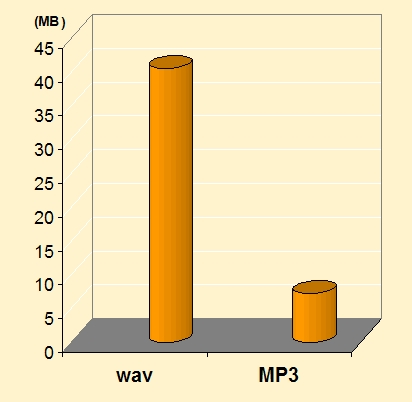
The MP3 encoders and decoders were developed by analyzing the properties of human auditory perception. Psychoacoustic models determine which parts of the audio signal can be removed or reduced without significantly affecting the perceived audio quality. By exploiting characteristics of human hearing, the MP3 format is able to achieve high compression ratios while preserving audio fidelity to a great extent.
One of the best features of MP3 coding is that it allows the user to select the optimum “bit rate” for the intended purpose. The bit rate determines the amount of data used to represent the audio per unit of time. A higher bit rate generally results in better sound quality, but larger file sizes. Users can choose different bit rates based on their preferences for sound quality versus file size. High bit rates result in higher fidelity, but at the cost of a larger file size.

Another MP3 capability developed by Fraunhofer is “joint stereo encoding” which allows a further reduction in file size. Instead of encoding the left and right audio channels independently, joint stereo encoding identifies and encodes the similarities between the channels, storing them once and referencing them in both channels. This technique exploits the fact that the human ear is less sensitive to differences between the left and right audio channels.
MP3 files also support a capability called “ID3 tags”, which allow users to embed metadata within the file itself. Metadata can include information such as song title, artist, album, genre, and more. This makes it easier for media players and software to organize and display information about the audio files.

To play an MP3 file, the file needs to be decoded back into an analog audio waveform. Decoding algorithms reconstruct the original audio signal from the compressed MP3 data. Fraunhofer developed a decoding algorithm that can easily be performed in real time by inexpensive, low power software players or dedicated hardware devices.
Together, these key technologies have made MP3 the dominant format for digital audio distribution, enabling the proliferation of portable music players, online music stores, and the widespread sharing and consumption of music on various platforms.
MP3 Performance
The performance of the MP3 digital file format can be measured in a number of ways. Is the audio quality good? Does it compress the file enough to compensate for the loss of audio quality? Is it compatible with lots of different devices, including inexpensive, low power music players? Is it suitable for streaming? In our view, MP3 is an excellent performer in all of these aspects.
Audio Quality
In terms of audio quality, MP3 provides a good balance between audio quality and file size. However, it is important to note that the perceived performance of MP3 files can vary depending on several factors, including the bit rate at which the audio is encoded, the original quality of the source material, and the listening environment. Higher bit rates result in better sound quality but larger file sizes, while lower bit rates reduce file sizes but may sacrifice some audio fidelity. At higher bit rates, such as 256 kbps and above, the quality of MP3 audio is generally considered to be transparent to most listeners, meaning it is difficult to distinguish the MP3 audio from the original audio source.
Compression Efficiency
MP3 offers a high degree of compression efficiency, allowing users to significantly reduce file sizes while maintaining reasonable audio quality. With little loss of audio fidelity, MP3 can compress a file by about 75%, meaning you can store 4 songs in the space of 1 song. If the user is willing to accept some audio impairments, then MP3 can achieve compression of about 95%, which means the user can store 20 songs in the space of 1 song.
Compatibility
MP3 files are widely supported by a vast range of devices, operating systems, and media players. This widespread compatibility makes MP3 a convenient and accessible format for music playback on various platforms, including computers, smartphones, portable music players, and car audio systems.
Streaming and Online Distribution
MP3 is very well suited to streaming and online distribution. For streaming, the data rate required to stream an MP3 file is very low, so even with a weak Wi-Fi or cellular connection, the user can listen to music. For online distribution, the MP3 file is so small that downloading a song is quick and easy. This also means that a small MP3 player with a modest amount of “flash” memory can hold a lot of songs. As a result, MP3 has played a crucial role in the growth of online music distribution and streaming services.
Alternatives to MP3
MP3 was first developed in 1994, so it is a rather old technology now. How does MP3 hold up, compared to more modern digital file formats? Let’s compare it to two of the most popular newer formats, which are FLAC (Free Lossless Audio Codec) and AAC (Advanced Audio Codec).
FLAC is a “lossless” audio coding format, which means there is no measurable difference between the original audio source and the digital FLAC recording. This is real high fidelity, and is preferred by audiophiles who want the best possible sound quality. FLAC file sizes are considerably larger than MP3, so FLAC may be less suitable for streaming or for portable devices with limited storage.
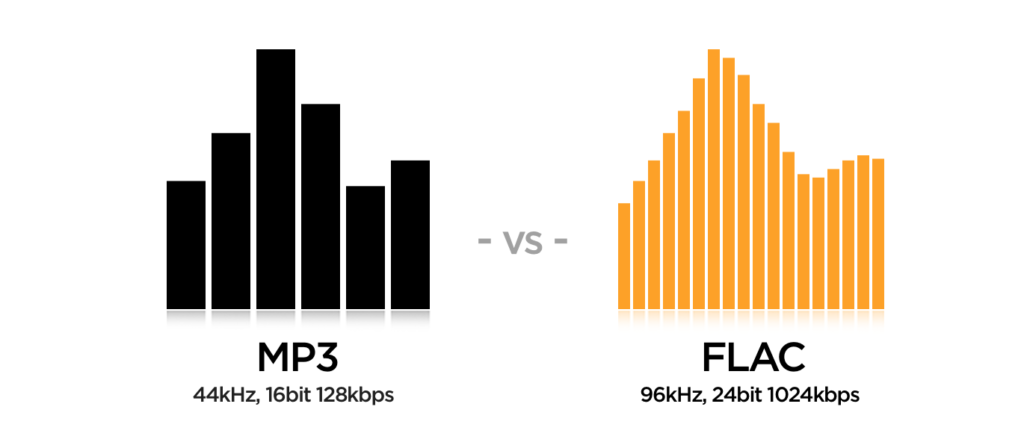
AAC is a more direct competitor to MP3. AAC is a lossy format, like MP3, but it can deliver superior audio quality at lower bit rates than MP3. Because of this advantage, AAC is commonly used in online music stores and streaming platforms. AAC also has some other advantages over MP3, such as a greater choice in sampling rates, greater number of channels, and better error correction. The only clear disadvantage of AAC is that users must pay for a license to use an AAC decoder whereas MP3 is license free.
Clearly, MP3 has been eclipsed by these new formats. For the discerning audiophile, lossless formats such as FLAC are the better choice. And for most people, AAC is a better choice than MP3 for it’s technical superiority. Nonetheless, MP3 continues to be a popular format due to it’s first-to-market advantage and wide adoption. MP3 may be around for quite a while.
MP3 Players
There have been thousands of MP3 players introduced since the MP3 format became available. These have come in wide range of designs, although the most popular design are portable music players. MP3 players have also been integrated into other products, such as mobile phones, television sets, and smart speakers.
The emergence of good quality, inexpensive MP3 players had a significant impact on the music business and played a crucial role in popularizing the format. Here are some of the most notable and influential MP3 players:
The very first MP3 player in the world was the “MPMan” which was manufactured by the South Korean company SaeHan Information Systems. The MPMan debuted in Asia in March 1998, and was the world’s first mass produced portable solid state digital audio player.
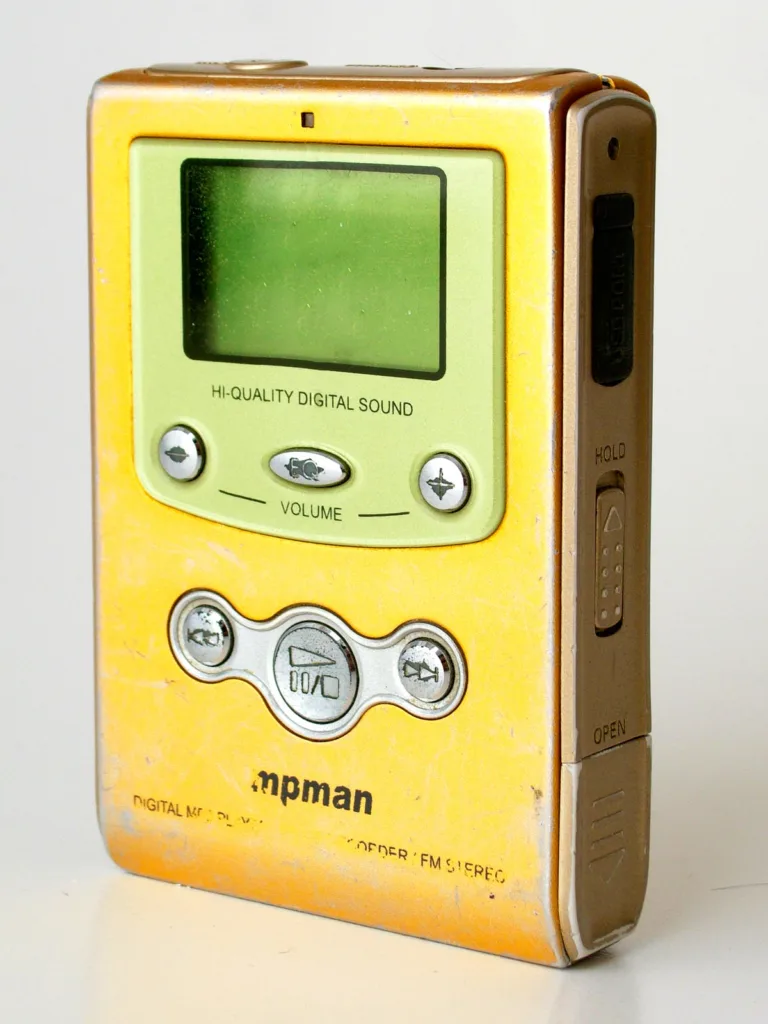
In North America, a company called Eiger Labs imported and rebranded the MPMan player in two models, the Eiger MPMan F10 and Eiger MPMan F20. They went on sale in 1998.
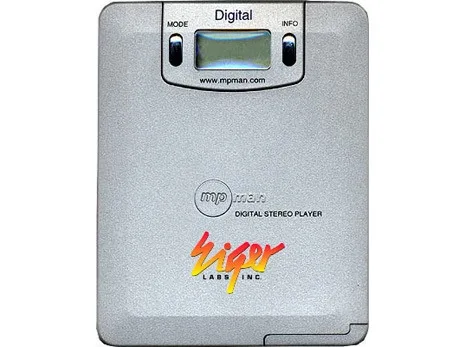
Released in 2000, the Creative Nomad Jukebox was one of the first portable MP3 players to offer a significant amount of storage capacity. The Jukebox employed a large hard drive, which allowed users to carry thousands of songs in their pocket, setting the stage for the future of portable music players.

Apple entered the market in 2001 when it introduced a portable music player called the iPod. The iPod revolutionized the portable music player industry with a sleek and simple user interface and beautiful aesthetic. The iPod also integrated seamlessly with Apple’s new “iTunes” service.
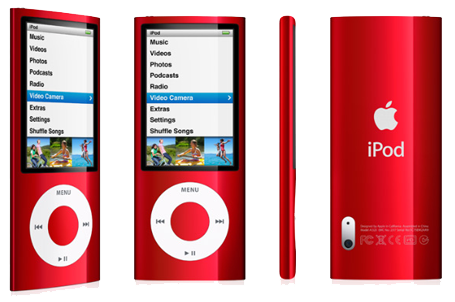
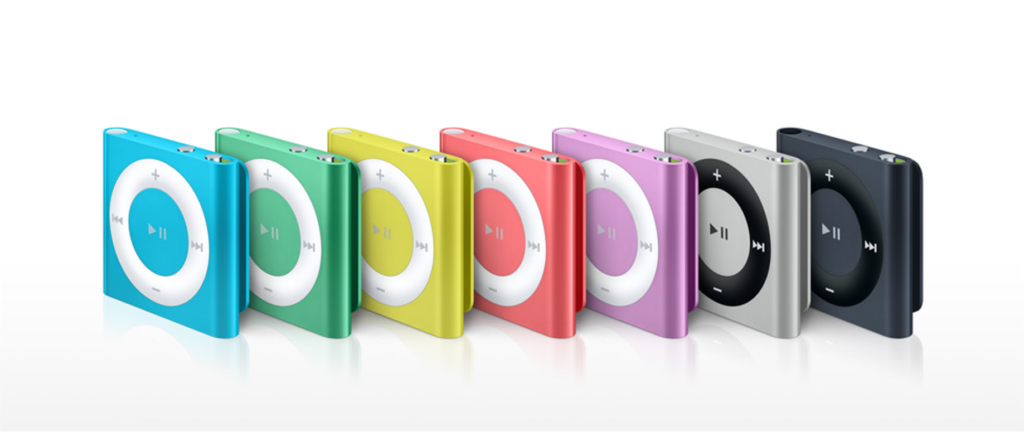
Sony introduced their portable “Network Walkman” music players around the same time as Apple, but the Sony models did not support the MP3 coding format. Sony wanted to protect their record label from piracy, so they employed a proprietary digital coding format called ATRAC instead of MP3. This hurt sales of the Sony products initially. Eventually Sony decided to build MP3 into their portable players, such as the Walkman NWZ series.
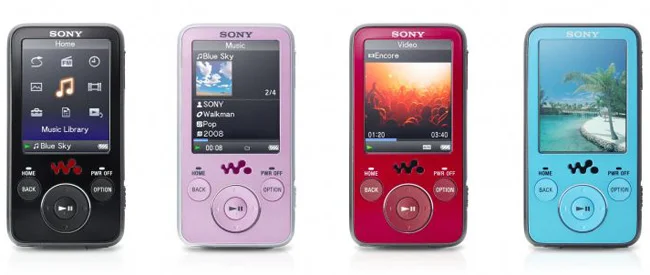
The SanDisk Sansa series gained popularity as affordable and feature-rich MP3 players. Models like Sansa Clip and Sansa Fuze offered compact designs, expandable storage options, and support for various audio formats, making them attractive options for budget-conscious consumers.
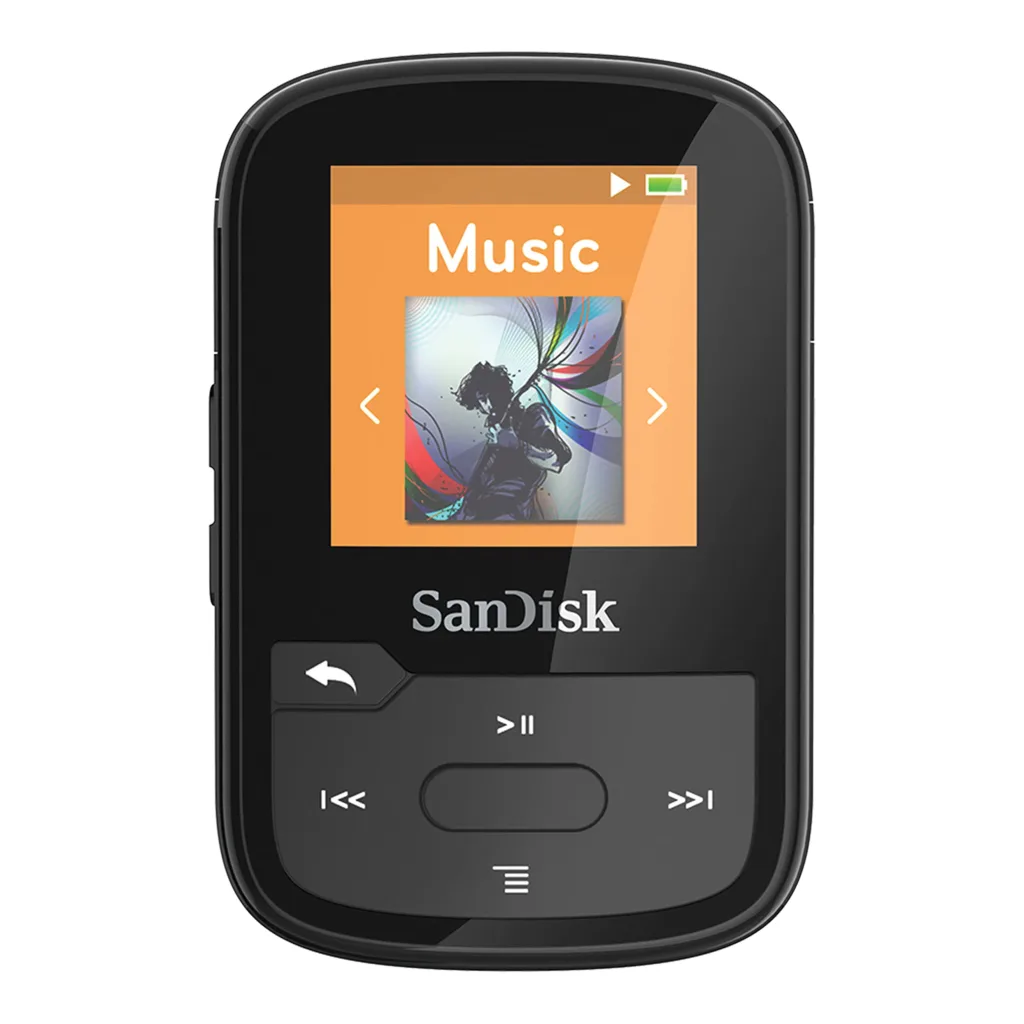
Although it did not achieve the same level of success as the iPod, the Microsoft Zune MP3 player introduced in 2006 brought some notable features, including a large screen, Wi-Fi connectivity, and a social sharing aspect. While the Zune line was eventually discontinued, it made a lasting impact on the MP3 player market.
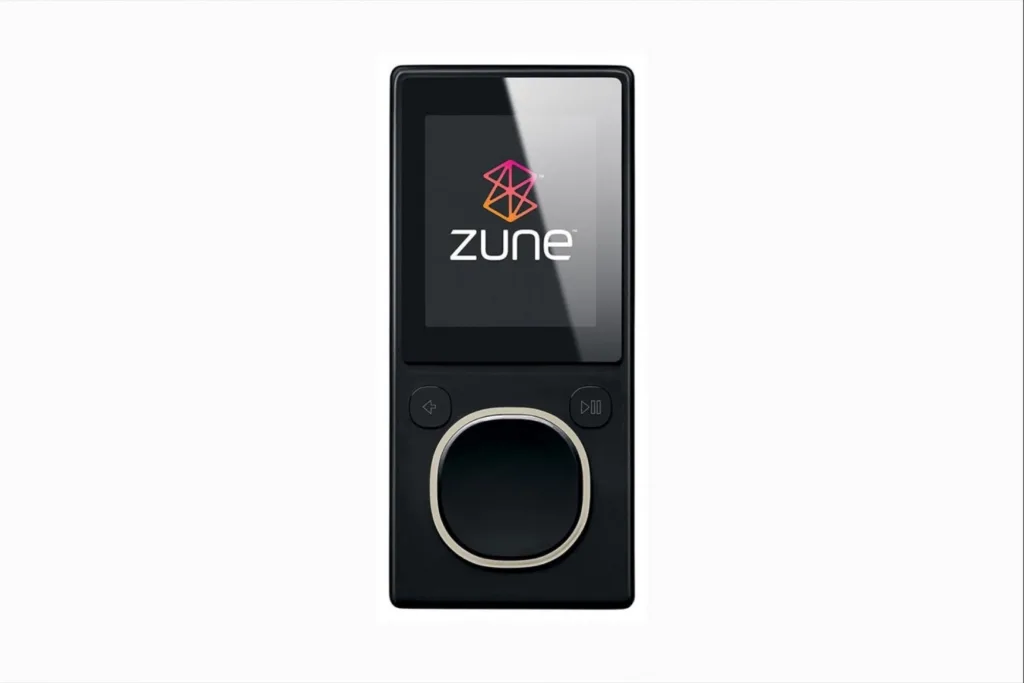
While these MP3 players had a significant impact on the market, it’s important to acknowledge that smartphones eventually absorbed much of the standalone MP3 player market. With smartphones offering MP3 playback capabilities, many users began relying on their phones as all-in-one devices for music, communication, and more.
MP3’s Impact on the Music Industry
The MP3 format played a pivotal role in the digital music revolution. Prior to the emergence of MP3, Music fans generally purchased their music on physical media such as Compact Discs, LP records, or cassette. MP3 enabled the widespread sharing, distribution, and storage of music in a compact and easily transferable format. This transformation revolutionized the music industry and led to the rise of online music stores, digital streaming services, and the concept of music ownership in the digital realm.
The MP3’s combination of small file size and acceptable fidelity led to a boom in the distribution of music over the Internet in the mid- to late-1990s. At that time, digital bandwidth and storage were still at a premium, so the small size of an MP3 music file made it feasible to store and share large amounts of music. The MP3 format soon became associated with controversies surrounding copyright infringement, music piracy, and the file ripping/sharing services MP3.com and Napster, among others.
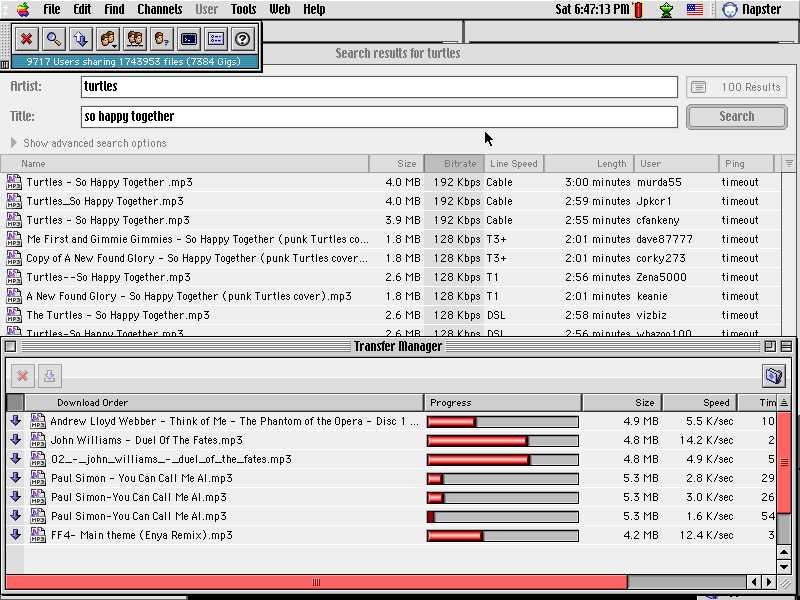
MP3 made music more accessible and portable than ever before. With the advent of MP3 players, users could carry thousands of songs in their pockets, allowing them to enjoy music on the go. This increased accessibility and portability led to a significant change in how people interact with and consume music.
The MP3 format democratized music distribution, allowing independent artists and musicians to reach a global audience without the need for major record labels or extensive physical distribution networks. Artists could create and distribute their music digitally, bypassing traditional gatekeepers and connecting directly with fans. This gave rise to a vibrant independent music scene and paved the way for platforms like SoundCloud and Bandcamp, which empower artists to self-publish and promote their work.
MP3 played a crucial role in the transformation of radio and broadcasting. Online radio stations and podcasts adopted MP3 as the standard format for audio streaming, making it easier for listeners to access a diverse range of content on-demand. This shift gave rise to personalized music recommendations, niche radio shows, and the concept of time-shifted listening.

MP3 has been instrumental in preserving audio archives, historical recordings, and rare music. By digitizing and compressing audio files, MP3s made it possible to store and share vast collections of music in a more efficient manner. This has helped preserve cultural heritage, expand musical knowledge, and make previously inaccessible recordings available to a broader audience.
Overall, the MP3 digital file format revolutionized the music industry by transforming how music is distributed, shared, and consumed. It empowered both artists and listeners, opened up new avenues for creativity, and shaped the digital music landscape that we experience today.
MP3 Induction into the Hi-Fi Hall of Fame
When you look at the overall impact that the MP3 Digital Coding Format has had on the music industry, on technology, and on society, there is no doubt that it is worthy of induction into the Hi-Fi Hall of Fame. With it’s low cost and ubiquity, it’s quite likely that most of humanity has owned an MP3 player or streamed a podcast or music using the MP3 format.
The key question remains: is MP3 truly Hi-Fi? The term “high fidelity” is usually reserved for audio systems or technologies that reproduce sound with a high level of accuracy and fidelity to the original recording. MP3 is a lossy format, which means that it discards certain audio data during the compression process to reduce file size. This data reduction can result in a loss of some audio quality compared to the original uncompressed source.
In our view, while MP3 may not be “Hi-Fi” in the strictest sense, it has provided a practical compromise between audio quality and file size that make it ideal for everyday music consumption. We think that the MP3 Digital Coding Format is sufficiently “Hi-Fi”, and is inducted into the Hi-Fi Hall of Fame.
